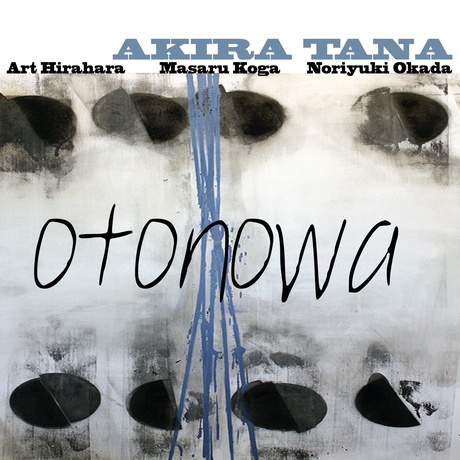
Otonowa
Akira Tana

News
About
Reaching beyond the American Songbooks, Otonowa ("Sound Circle") explores both popular contemporary and traditional folk melodies of Japan in search of new jazz standards. In these arrangements, Japanese instruments such as the shakuhachi (flute) and the fan drum meld with piano, acoustic bass, and drum set. Inspired by relief efforts for the earthquake and tsunami of 2011, the musicians featured on this recording interpret the songs of their ancestry with a Western jazz sensibility that transcends both worlds.
Tracks
01 Yashi No Mi 03:43
02 Nada Sou Sou 04:23
03 Otonoha 1 01:32
04 Karatachi No Hana 03:02
05 Akatombo 04:35
06 Koi No Vacance 07:04
07 Otonoha 3 01:40
08 Yoimachigusa 05:25
09 Ue O Muite Arukou 06:34
10 Momiji 04:11
11 Sakura Sakura 05:20
12 Otonoha 2 02:30
13 Kojo No Tsuki 05:20
14 Gion Kouta 03:39
15 Furusato 07:17
Credits
Akira TANA, drums
Masaru KOGA, saxophones, flute, shakuhachi, percussion
Art HIRAHARA, piano
Noriyuki OKADA, bass
Carl YAMADA, executive producer
Sampler
This YouTube playlist provides short clips of the album's main tracks:
Reviews
"… if jazz is, indeed, a universal language, then that fact is certainly never more evident than [in] what these talented artists have done with this music. Akira Tana's wonderful group is truly doing something very special here and it is a fine example of how music can break down cultural barriers and expose the commonality within us all."
— Eric Harabadian, Jazz Inside, July 2013
"…Akira Tana led his Otonowa Project through its gemlike arrangements of classic Japanese songs. The quartet — recently returned from a goodwill tour of northern Japanese villages devastated by the 2011 tsunami and earthquake — gave a performance that seemed love-filled and compassionate. At times it felt like a lullaby… It was exquisite."
— Richard Scheinin, San Jose Mercury News
"The playing, by every member of the group “Otonowa”, was exceptional… Besides Tana, the group was led by the fabulous horn and flute player Masaru Koga, who beautifully kicked off each of the tunes on his collection of instruments, starting with the Japanese flute (shakuhachi), and including tenor sax, baritone sax and Western “C” flute. Art Hirahara played strong piano, and bassist Noriyuki “Ken” Okada was a very strong player as well. The material was fascinating to Western ears, as they played melodies that a great number of the Japanese have heard since childhood. Half of the songs were Japanese folk melodies, some the equivalent of Western lullabies. Others, including “Koi No Vacance,” are pop songs from the 70s that remain very much in the minds of listeners in Japan. One piece, “Gion Kouta”, was written for Geisha dancers. The arrangements were contributed by each member of the group. Many of these songs are performed in Japanese schools regularly, but not necessarily recognizable to most listeners here. The effect was fascinating to the audience, and the idea of presenting these songs to the Japanese who have suffered trauma and loss was very moving."
— Ken Vermes, Jazz Police, in review of Otonowa's Stanford Jazz Festival performance on July 10, 2015
